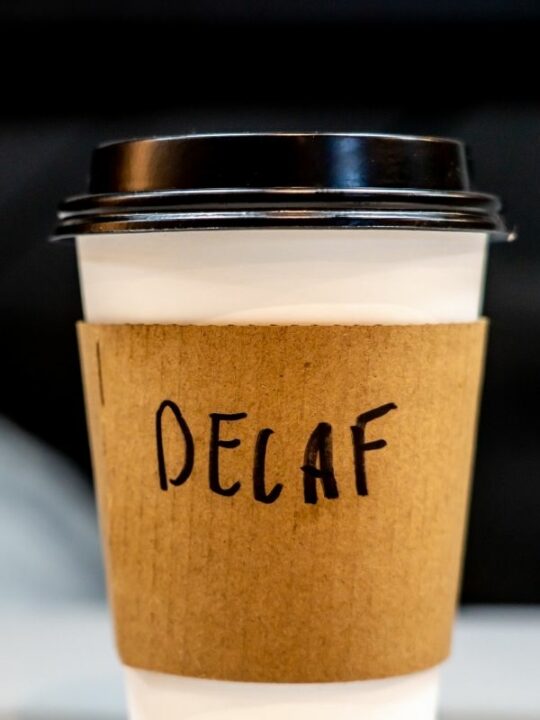Most avid coffee drinkers are shifting towards drinking tea. It isn’t surprising considering the benefits of drinking tea. We all know tea does naturally contain caffeine.
However, teas can be stripped of their caffeine content. We have all heard of decaf coffee, and decaf tea works the same.
Regardless, there are still some skeptics regarding decaf tea, whether it exists, and the method behind its making. After all, we all know not everyone is trying to get a caffeine kick first thing in the morning.
How is decaf tea made?
Decaffeinated tea is made using four primary methods. The most popular procedure is by using ethyl acetate. The next most natural way is to use carbon dioxide. There’s also the method of using water or methylene chloride. The last two methods aren’t popular but still remain one of the few ways.
Decaffeination using hot water
Although not a primary method of decaffeination, it is still frequently used because of its ease. However, this method is the least effective out of all the methods known to man.
Decaffeination using hot water requires the tea to be soaked in hot water for a long time. Later the water is passed through a carbon filter. This step is essential in removing the caffeine content. The solution extracted is then re-introduced to the tea to absorb flavor and aroma following the carbon filter.
This method is rarely used by long-time tea drinkers and tea masters as it is notoriously known to produce a watered-down version of the original tea. Moreover, this process is not commonly used to produce decaf coffee.
Decaffeination by using carbon dioxide
Carbon dioxide is a naturally occurring element in our environment. There is an abundance of it. Hence using CO2 to decaffeinate tea will never be an issue in terms of supply shortage.
It is worth noting that the use of CO2 is the only approved “certified” decaffeination method in the market. The use of carbon dioxide is not only the most popular method of decaffeinating tea. It is also the most eco-friendly one.
Since it is a natural decaffeination method, it better retains the tea’s flavor, aroma, and health benefits compared to the other three methods.
How decaffeination through the use of carbon dioxide works is simple.
This method employs infusing water with carbon dioxide in a pressure cooker like concussion. In this pressure cooker, the carbon dioxide reaches a state known as “supercritical,” here, the CO2 essentially converts into a solvent.
The solvent carbon dioxide is a small, non-polar molecule that attracts the caffeine molecules from the tea and binds with them.
High temperatures and pressures are required to convert the carbon dioxide gas to a solvent which can only be achieved through this method.
Decaffeination using methylene chloride
The use of methylene chloride for decaffeinating tea is termed the chemical solvent method.
Methylene chloride is also known as dichloromethane and is considered the most unsafe method for decaffeinating tea. In fact, some countries restrict the use of this component for decaffeination.
Besides being used for making decaf tea, methyl chloride is also used in industrial productions for paint stripping, paint removal, metal cleaning, pharmaceutical products, metal degreasing, and polyurethane foam manufacturing.
The process of decaffeination through methyl chloride requires soaking the tea leaves directly or indirectly into to chemical.
The caffeine molecules from the tea leaves seep out and bind with the methyl chloride molecules through this method. The flavors and oils left behind, which do not attach to the methyl chloride, are then extracted.
Although deemed the most unsafe, this method retains the best flavor and aroma in the tea compared to the other available methods.
There is still debate on whether using methyl chloride is dangerous or not since the component evaporates at temperatures of 104°F (40°C) and tea is boiled at 212°F (100°C).
Decaffeination using ethyl acetate
Teas that are decaffeinated using ethyl acetate are termed as “naturally decaffeinated.” The reason why the use of ethyl acetate is considered natural is that the molecule is present naturally in many fruits.
The method of using ethyl acetate to make decaffeinated tea is similar to using methyl chloride. The tea leaves are introduced into the solution containing ethyl acetate. The caffeine molecules are attracted to and bind with the ethyl acetate molecules.
Lastly, the oils and flavor from the water are then put back into the tea. This method is more popularly used to produce decaffeinated tea in tea bags rather than loose leaf tea.
Although considered a natural method of decaffeinating tea, ethyl acetate is also used in non-food item production, such as in nail polish removers.
How is decaf tea brewed?
Brewing decaf tea is no rocket science. In fact, the process is similar to brewing your regular cup of tea. The ingredients required for brewing decaf tea include water, decaf tea of your choice, sugar, or sweetener if you are diabetic (according to preference).
First, you would need to bring the water to a boil to about 212°F (100°C). The temperature may vary depending on the tea you are brewing. Once the water is at the desired temperature, you need to add the tea leaves or tea bag and leave to brew for 4-5 minutes.
The last step is to add sugar or sweetener as per your desire or skip it altogether. And voila! The perfect cup of decaf tea is ready. Let it be known that even though various methods of decaffeination, there will still be some caffeine left in your decaf (approximately 2.5mg)
Frequently asked questions about decaf tea
Is decaffeinated the same as caffeine-free tea?
Although these two terms are used interchangeably, they aren’t synonymous. Decaffeinated tea still has minimal traces of caffeine, whereas caffeine-free tea contains zero amount of caffeine, including herbal teas.
